Framework Science
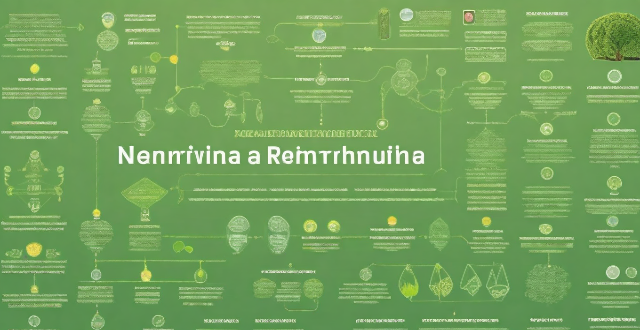
Can you provide examples of successful knowledge frameworks in various disciplines ?
Knowledge frameworks are structured approaches to organizing information within a field of study or practice. Successful examples include the human body systems in medicine, the OSI model in computer science, the language acquisition framework in linguistics, SWOT analysis in business, the ecosystem services framework in environmental science, and Bloom's Taxonomy in education. These frameworks facilitate specialized knowledge, standardize protocol development, guide teaching methods, support decision-making processes, highlight interdependence between natural systems and human well-being, and promote higher-order thinking skills.
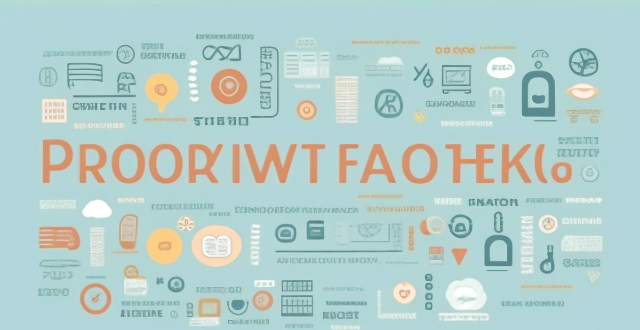
What are the key steps to constructing an effective knowledge framework ?
The text provides a structured approach to constructing an effective knowledge framework, which is essential for efficient learning, understanding, and application of knowledge. The key steps include identifying the core concepts, categorizing information, establishing connections, integrating new information, evaluating and refining the framework, and practicing application. It emphasizes that constructing a knowledge framework is an ongoing process that requires regular updates and refinements as one continues to learn and grow.

How do I integrate new information into my existing knowledge framework ?
Integrating new information into your existing knowledge framework is a crucial skill for learning and personal growth. Here are some steps you can follow to effectively incorporate new knowledge into what you already know: ## Identify Relevant Information 1. **Scan** the new information quickly to get an overview. 2. **Identify** key concepts, theories, or facts that relate to your current knowledge. 3. **Filter out** any irrelevant or redundant information. ## Connect with Existing Knowledge 1. **Activate** your prior knowledge by recalling similar concepts or experiences. 2. **Make connections** between the new information and what you already know. 3. **Create analogies** or metaphors to help relate the new information to familiar ideas. ## Evaluate and Organize Information 1. **Assess** the validity and reliability of the new information. 2. **Organize** the information in a way that makes sense within your existing framework. 3. **Categorize** the new knowledge based on its relevance and importance. ## Reflect and Consolidate 1. **Reflect** on how the new information affects your understanding or perspective. 2. **Consolidate** the new knowledge by summarizing it in your own words. 3. **Reinforce** the integration by explaining it to someone else or applying it in practice. ## Update Your Knowledge Framework 1. **Modify** your existing framework to accommodate the new information. 2. **Expand** your knowledge base by adding new categories or subtopics if necessary. 3. **Re-evaluate** the relationships between different pieces of knowledge within your framework. ## Practice and Apply 1. **Apply** the new knowledge in real-world situations to deepen your understanding. 2. **Practice** recalling and using the new information regularly. 3. **Seek feedback** from others to validate and refine your understanding further. By following these steps, you can effectively integrate new information into your existing knowledge framework, fostering continuous learning and intellectual growth.

How does a knowledge framework aid in learning and understanding complex topics ?
The text discusses the importance and benefits of using a knowledge framework to aid in learning and understanding complex topics. A knowledge framework is an organized structure that helps to categorize, relate, and prioritize information, serving as a mental model or conceptual map that guides the learning process. The importance of a knowledge framework includes facilitating organization, enhancing comprehension, promoting deeper analysis, and supporting critical thinking. The benefits of using a knowledge framework include simplifying information overload, building stronger associations, enabling better recall and application, improving memory retention, and facilitating application. The text also discusses the application of a knowledge framework in education and training, research and analysis, and professional settings. Overall, the development and utilization of a knowledge framework is crucial for anyone aiming to master challenging subjects and apply that knowledge effectively.

What is climate science ?
Climate science, or climatology, is the study of Earth's climate and the factors that influence it. It involves understanding the complex interactions between the atmosphere, oceans, land surfaces, and living organisms that shape our planet's climate system. Key areas in climate science include atmospheric science, oceanography, biogeochemistry, paleoclimatology, climate modeling, solar system climatology, climate impacts research, climate policy analysis, remote sensing, and data assimilation. The importance of climate science lies in its ability to help us understand natural climate variability, predict climate change, inform policy decisions, protect ecosystems, and enhance public awareness about climate-related issues. By studying historical climate data and projecting future scenarios, scientists can predict how global warming will affect weather patterns and sea levels. This information is crucial for formulating policies aimed at reducing greenhouse gas emissions and preparing for the consequences of climate change. In conclusion, climate science is an interdisciplinary field that integrates knowledge from various scientific disciplines to provide a comprehensive understanding of Earth's climate system. Its findings are essential for addressing one of the most pressing challenges facing humanity today: climate change.
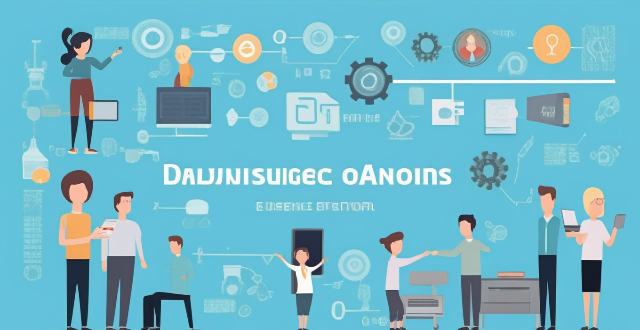
What challenges might I face when constructing a knowledge framework, and how can I overcome them ?
The text discusses the challenges in constructing a knowledge framework and provides solutions to these challenges. The challenges include identifying relevant information, structuring the framework, technical limitations, human factors, and maintenance and updates. The solutions suggested are using reliable sources, implementing filtering techniques, consulting with experts, using an iterative approach, visual mapping, modular design, custom development, flexible design, peer review, user testing, feedback loops, automated systems, dedicated teams, and regular reviews. By anticipating potential challenges and implementing appropriate solutions, you can create a robust and effective knowledge framework that supports learning, decision-making, and innovation within your domain.

What are the most effective methods for disseminating climate science information ?
To disseminate climate science information effectively, a multi-pronged approach combining educational programs, digital media, partnerships, community outreach, and policy advocacy should be employed. This involves integrating climate science into school curricula, organizing public awareness campaigns, leveraging social media, creating dedicated websites, partnering with government agencies and NGOs, hosting local events, and engaging in lobbying efforts and grassroots movements. By doing so, we can increase public understanding of climate change and foster a culture of sustainability.
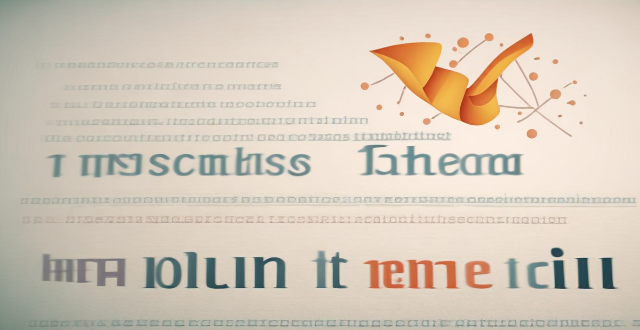
What are the latest advancements in sports science ?
The text discusses the latest advancements in sports science, including wearable technology, nutritional science, biomechanics, and mental training. Wearable technology provides real-time data on an athlete's performance, while nutritional science focuses on specialized diets and supplements. Biomechanics studies human movement to improve form and reduce injuries, while mental training techniques help build confidence and manage stress. These advancements have revolutionized athletic performance across all levels of competition.

What is the impact of climate science misinformation on public perception and behavior ?
Text: Impact of Climate Science Misinformation on Public Perception and Behavior Climate science misinformation can lead to increased skepticism towards climate change, polarization of views, undermining of trust in science, influence on policy decisions, and delayed action on addressing climate change. To combat these effects, promoting accurate information about climate change is crucial through education, media campaigns, and transparent communication from scientists and policymakers.
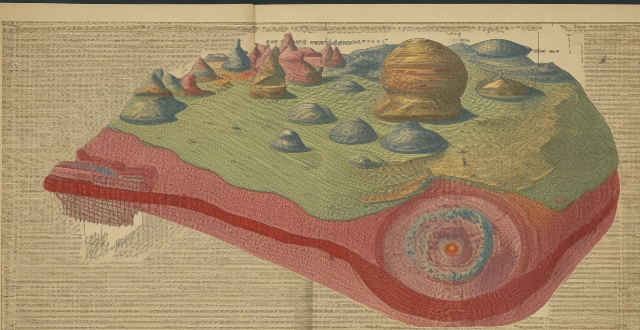
How can citizen science contribute to biodiversity research and conservation ?
This article explores the role of citizen science in enhancing biodiversity research and conservation efforts. It highlights how involving the general public in scientific projects can boost data collection, raise environmental awareness, and support conservation initiatives. The article also provides examples of successful citizen science projects that have contributed significantly to understanding and protecting biodiversity.

How can we encourage more girls to pursue careers in science and technology ?
To encourage more girls to pursue careers in science and technology, several strategies can be employed, including introducing female role models in STEM fields, offering targeted scholarships, creating supportive learning environments, fostering industry collaboration, promoting diverse perspectives, building confidence, improving media representation, advocating for policy changes, and engaging communities. Implementing these measures can help create an environment where girls feel empowered to explore and excel in science and technology.

How have advancements in materials science impacted sports equipment design ?
Advancements in materials science have significantly impacted sports equipment design, improving durability, performance, safety, comfort, and customization. Examples include carbon fiber bats, advanced composite tennis racquets, titanium golf clubs, aerodynamic cycling helmets, shock-absorbing running shoes, breathable athletic apparel, customized orthotics, and personalized mouthguards. These innovations not only enhance the athletes' performance but also reduce waste, making it an environmentally friendly option.

Can you share a story about a woman who has made significant contributions in science or technology ?
Marie Curie's life and work epitomize scientific breakthrough and personal resilience. Born in a restricted society, she overcame numerous obstacles to become the first woman to win a Nobel Prize and the only person to win in two different sciences. Her pioneering research on radioactivity led to advancements in physics, chemistry, medicine, and technology. Despite facing significant gender bias, Marie's dedication and achievements have made her a timeless inspiration for scientists worldwide.
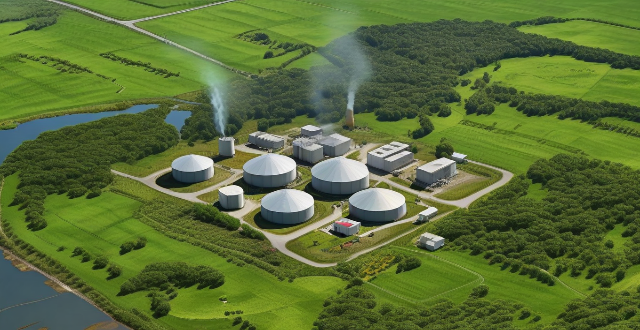
What is the significance of the United Nations Framework Convention on Climate Change (UNFCCC) ?
The United Nations Framework Convention on Climate Change (UNFCCC) is a significant international environmental treaty that aims to stabilize greenhouse gas concentrations in the atmosphere at a level that would prevent dangerous human interference with the climate system. It was adopted in 1992 and came into force in 1994, and has been ratified by 197 parties, including all of the world's major industrialized nations. The UNFCCC sets out commitments for developed country Parties and developing country Parties, holds annual Conferences of the Parties (COP), and recognizes the importance of both adaptation and mitigation in addressing climate change. The UNFCCC also acknowledges that developed countries have a responsibility to provide financial and technological support to developing countries to help them address climate change. The significance of the UNFCCC lies in its role as a framework for global cooperation on climate change, its political commitment by countries around the world, its science-based approach, its emphasis on equity, and its long-term vision for addressing climate change.
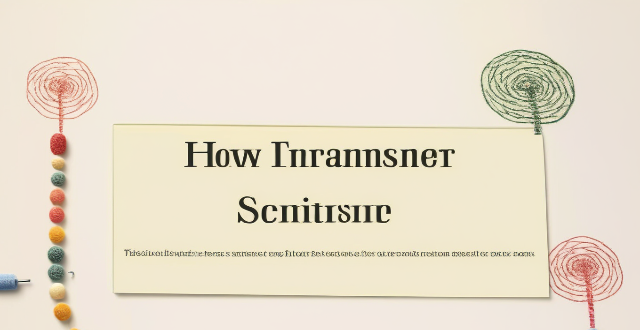
How do we ensure that climate decisions are based on sound science ?
The text discusses how to ensure that climate decisions are based on sound science. It suggests a multi-faceted approach that includes ensuring data quality and integrity, promoting interdisciplinary collaboration, and enhancing public understanding and involvement. The author emphasizes the importance of rigorous research, maintaining data integrity, encouraging collaboration between different fields, integrating traditional knowledge and local expertise, educating the public about climate science, and encouraging public participation in decision-making processes. By adopting these strategies, we can make informed decisions that effectively address the challenges posed by climate change.

What are some tips for making science experiments at home for educational purposes ?
Science experiments are a great way to engage children in learning about the natural world around them. Here are some tips for conducting science experiments at home for educational purposes: ## 1\. Choose Age-Appropriate Experiments Select experiments that are suitable for your child's age and ability level. Younger children may enjoy simple experiments involving colors, shapes, and basic physical properties, while older children can tackle more complex concepts such as chemical reactions or electricity. ## 2\. Gather Materials in Advance Make sure you have all the necessary materials before starting the experiment. This will help avoid interruptions and frustration during the process. Create a list of required items and gather them ahead of time. ## 3\. Follow Safety Guidelines Safety should always be a top priority when conducting science experiments at home. Ensure that you and your child follow proper safety guidelines, such as wearing protective gear (e.g., goggles, gloves) and working in a well-ventilated area. ## 4\. Involve Your Child in the Process Encourage your child to participate in every step of the experiment, from planning to execution. This will not only make the experience more enjoyable but also help them develop critical thinking skills and problem-solving abilities. ## 5\. Observe and Record Results Observing and recording results is an essential part of any scientific experiment. Encourage your child to take notes throughout the process, documenting their observations and findings. This will help them understand the importance of data collection and analysis in science. ## 6\. Discuss Results and Implications After completing the experiment, discuss the results with your child. Ask questions about what they learned, how the experiment could be improved, and what implications their findings might have on real-world applications. This will help foster their curiosity and interest in science. ## 7\. Clean Up Properly Teach your child the importance of cleaning up after themselves by ensuring that all materials are properly disposed of and surfaces are wiped down. This will help maintain a safe and organized environment for future experiments.

What are the most effective ways to engage young people in climate science communication ?
Engaging young people in climate science communication is crucial for creating a sustainable future. Here are some effective ways to do so: 1. Use interactive and engaging methods such as gaming and simulations, visualization tools, and interactive workshops to make complex climate concepts more accessible and fun to learn. 2. Involve young people in the process by involving them in participatory research, citizen science projects, and advocacy and activism to increase their ownership and interest in climate science. 3. Make it relevant to their lives by providing localized information, discussing career opportunities, and sharing personal stories to help young people understand the impact of climate change on their lives and communities. By using these strategies, we can inspire the next generation of climate leaders and create a more sustainable future for all.
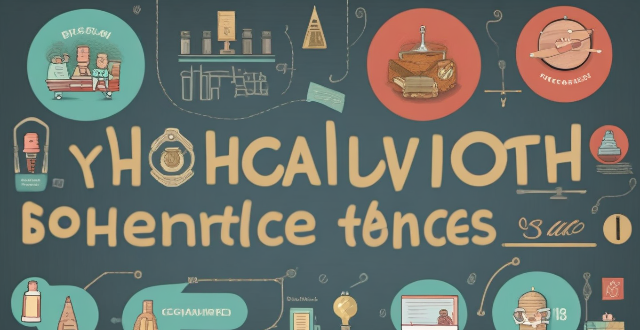
What are the psychological barriers to accepting climate science, and how can they be overcome ?
The text discusses psychological barriers to accepting climate science, including cognitive dissonance, confirmation bias, the scary world scenario, mistrust of science, perceived lack of control, narratives of doom, tribalism, and optimism bias. Strategies for overcoming these barriers involve education and awareness, inclusivity and dialogue, and empowerment and action. By addressing these barriers and implementing strategies for change, a more informed and engaged public can be created to tackle the challenges of climate change head-on.
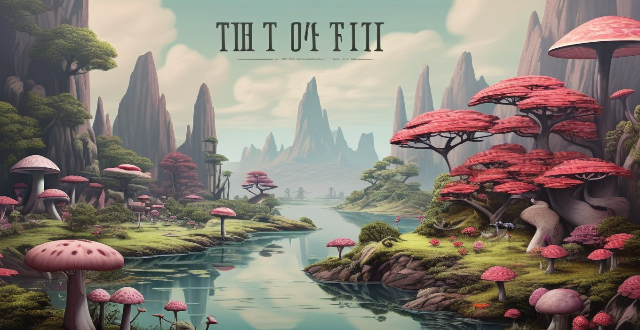
How do we overcome the challenges of communicating complex climate science concepts to non-scientists ?
Overcoming the Challenges of Communicating Complex Climate Science Concepts to Non-Scientists: Tips and Strategies for Making Climate Science Accessible and Understandable.

What are the ethical considerations of space exploration and colonization ?
The article discusses the ethical considerations of space exploration and colonization, emphasizing the importance of balancing potential benefits with risks, considering environmental impact, addressing interplanetary diplomacy, and developing a comprehensive legal and regulatory framework. It highlights the need for a strong ethical framework to ensure responsible and sustainable pursuit of space endeavors.
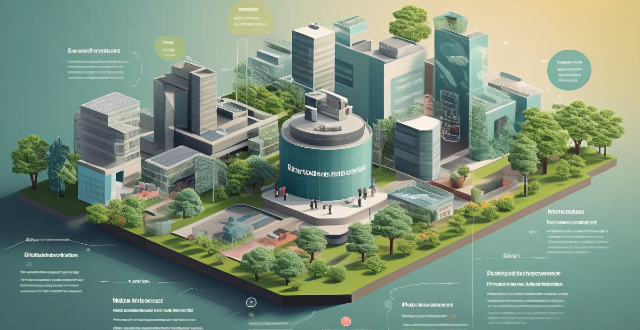
What are the benefits of having a well-structured knowledge framework ?
A well-structured knowledge framework offers benefits such as improved learning efficiency, enhanced understanding, increased application capabilities, and improved communication skills. By organizing information systematically, individuals can maximize their potential for success in various aspects of life.
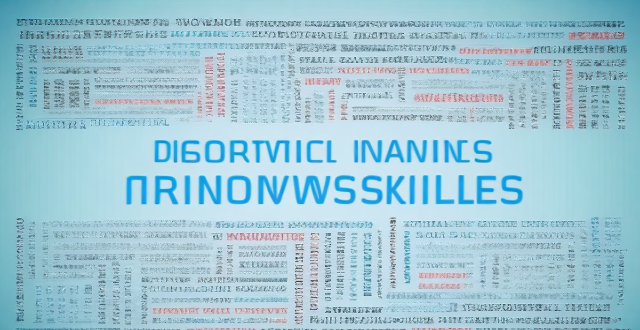
What role does critical thinking play in building a knowledge framework ?
This text discusses the importance of critical thinking skills in building a knowledge framework. It outlines four key aspects of critical thinking: identifying assumptions, evaluating evidence, analyzing arguments, and making informed decisions. By applying these skills, individuals can develop a nuanced understanding of complex issues and make well-reasoned decisions based on sound reasoning and evidence. The article emphasizes the crucial role of critical thinking in personal growth and success in various domains.
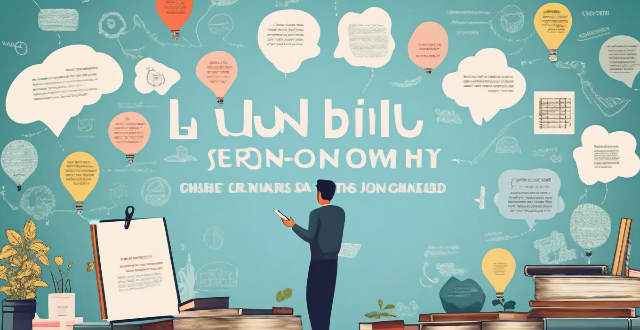
How can I build a strong knowledge framework in my field of study ?
To build a strong knowledge framework in your field of study, follow these steps: define your goals, conduct research, build a foundational understanding, connect ideas and concepts, apply your knowledge, and continuously learn. By doing so, you'll be able to think critically, solve complex problems, and contribute to the advancement of your field.

What are the key recommendations of the TCFD framework ?
The Task Force on Climate-related Financial Disclosures (TCFD) was established by the Financial Stability Board (FSB) in December 2015. The TCFD's objective is to provide clarity, consistency, and comparability in the information reported by companies about their climate-related risks and opportunities. The framework aims to help investors, lenders, insurers, and other stakeholders understand how companies are managing these risks and opportunities. Here are the key recommendations of the TCFD framework: Companies should describe their governance arrangements for managing climate-related risks and opportunities. This includes clear assignment of responsibility for oversight of these issues, linkage to company strategy and risk management processes, and integration with other ESG (Environmental, Social, and Governance) reporting. Companies should identify and report on both the potential impacts of climate change on their business (risks) and the opportunities that may arise from transitioning to a lower carbon economy. This includes direct physical and transition risks, indirect risks through the supply chain or customer behavior, and opportunities related to new markets, products, or services. Companies should describe their approach to managing climate-related risks and opportunities. This includes short-term and long-term strategy considerations, alignment with corporate goals and risk appetite, and use of scenario analysis and stress testing. Companies should disclose quantitative metrics and targets related to climate risks and opportunities. This includes emissions data, including Scope 1, 2, and 3 emissions, energy usage and efficiency improvements, and carbon intensity reduction targets. Companies should disclose relevant financial implications of climate-related risks and opportunities. This includes impact on financial statements, capital allocation decisions influenced by climate factors, and insurance coverage for climate-related risks. Companies are encouraged to use scenario analysis to illustrate the potential financial impacts of different climate pathways. This helps stakeholders understand how companies are prepared for various future climate scenarios. While not mandatory, the TCFD recommends obtaining external assurance on the information disclosed, where material. This enhances the reliability and credibility of the disclosures. Companies should also disclose non-financial exposures related to climate change, such as reputational risks or legal and regulatory challenges. Companies are encouraged to report on their strategies for mitigating climate risks and adapting to changing climate conditions. This includes investments in renewable energy, energy efficiency measures, and resilience planning. The TCFD encourages companies to use consistent metrics and methodologies to enable comparability across different organizations and industries. This aids in benchmarking and tracking progress toward climate goals.

How can technology be used to enhance the development of a knowledge framework ?
The text discusses the various ways in which technology enhances knowledge framework development. It mentions that technology provides access to information, enables interactive learning, fosters collaboration and networking, offers customization and personalization, provides data analytics and assessment, automates routine tasks, and supports lifelong learning. The text concludes by emphasizing the importance of integrating technology into educational systems while also maintaining a balance with traditional teaching methods.
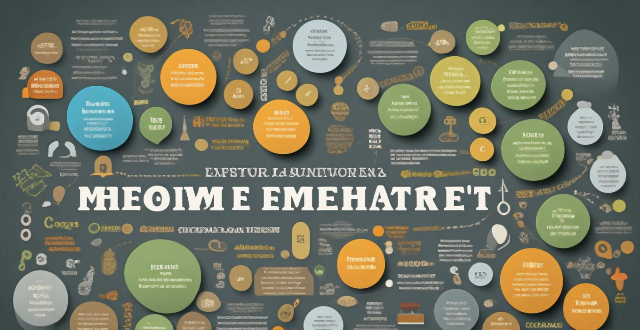
How often should I review and update my knowledge framework to ensure it remains relevant and accurate ?
To ensure your knowledge framework remains relevant and accurate, review and update it regularly. The frequency depends on factors like the rate of change in your field, learning goals, and the amount of new information encountered. General guidelines include weekly reviews, monthly updates, quarterly assessments, and annual overhauls. Tips for effective review and update include setting aside dedicated time, being open to change, using organizational tools, and seeking feedback.

What initiatives can be taken to improve scientific literacy among women ?
Scientific literacy is important for making informed decisions about health, environment, and technology. Women often face barriers to accessing scientific education and resources. To improve scientific literacy among women, initiatives such as educational programs, community outreach, media representation, and policy changes can be taken. These include integrating STEM subjects into the school curriculum, offering girls-only classes, connecting young girls with female role models in STEM fields, establishing community-based science clubs for women of all ages, organizing public lectures by women scientists, conducting workshops and training sessions on various scientific topics, highlighting stories of successful women in science through media platforms, encouraging more women to pursue careers in science journalism, utilizing social media platforms to create awareness about scientific issues affecting women's lives, advocating for increased funding for educational programs and research initiatives focused on improving women's participation in STEM fields, lobbying for policies that ensure equal opportunities for women in science education and employment, and implementing mandatory gender bias training for educators and professionals working in STEM fields. By implementing these initiatives, we can create a more inclusive environment that encourages women to explore and contribute to the field of science.